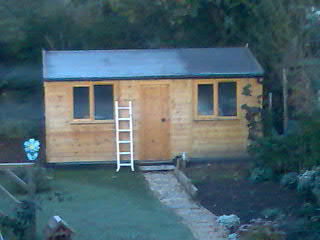gasmansteve
Established Member
Hi all
I suppose its woodworking of a fashion??.
I`ve been thinking of installing some form of heating in my concrete garage/cum workshop. I`ve a bigger car now so its not used for the car. Its detached from the house and I have been thinking of getting a little wood burning stove to serve two purposes 1- the heating and 2- a way of getting rid of the shavings/**** ups made at the lathe (many of) etc.
Anyone know the ventilation requirements for the these (I suppose maybe similar to gas?) and does shavings etc make a lot of smoke as I live in a smokeless zone and don`t want to cause grief to my neighbours.
It would simply stand on the concrete floor with about 2.5m of flue pipe up throught the corrugated roof (8yrs old so not asbestos!) any other advice/tips very welcome please.
Cheers
Steve
I suppose its woodworking of a fashion??.
I`ve been thinking of installing some form of heating in my concrete garage/cum workshop. I`ve a bigger car now so its not used for the car. Its detached from the house and I have been thinking of getting a little wood burning stove to serve two purposes 1- the heating and 2- a way of getting rid of the shavings/**** ups made at the lathe (many of) etc.
Anyone know the ventilation requirements for the these (I suppose maybe similar to gas?) and does shavings etc make a lot of smoke as I live in a smokeless zone and don`t want to cause grief to my neighbours.
It would simply stand on the concrete floor with about 2.5m of flue pipe up throught the corrugated roof (8yrs old so not asbestos!) any other advice/tips very welcome please.
Cheers
Steve



































